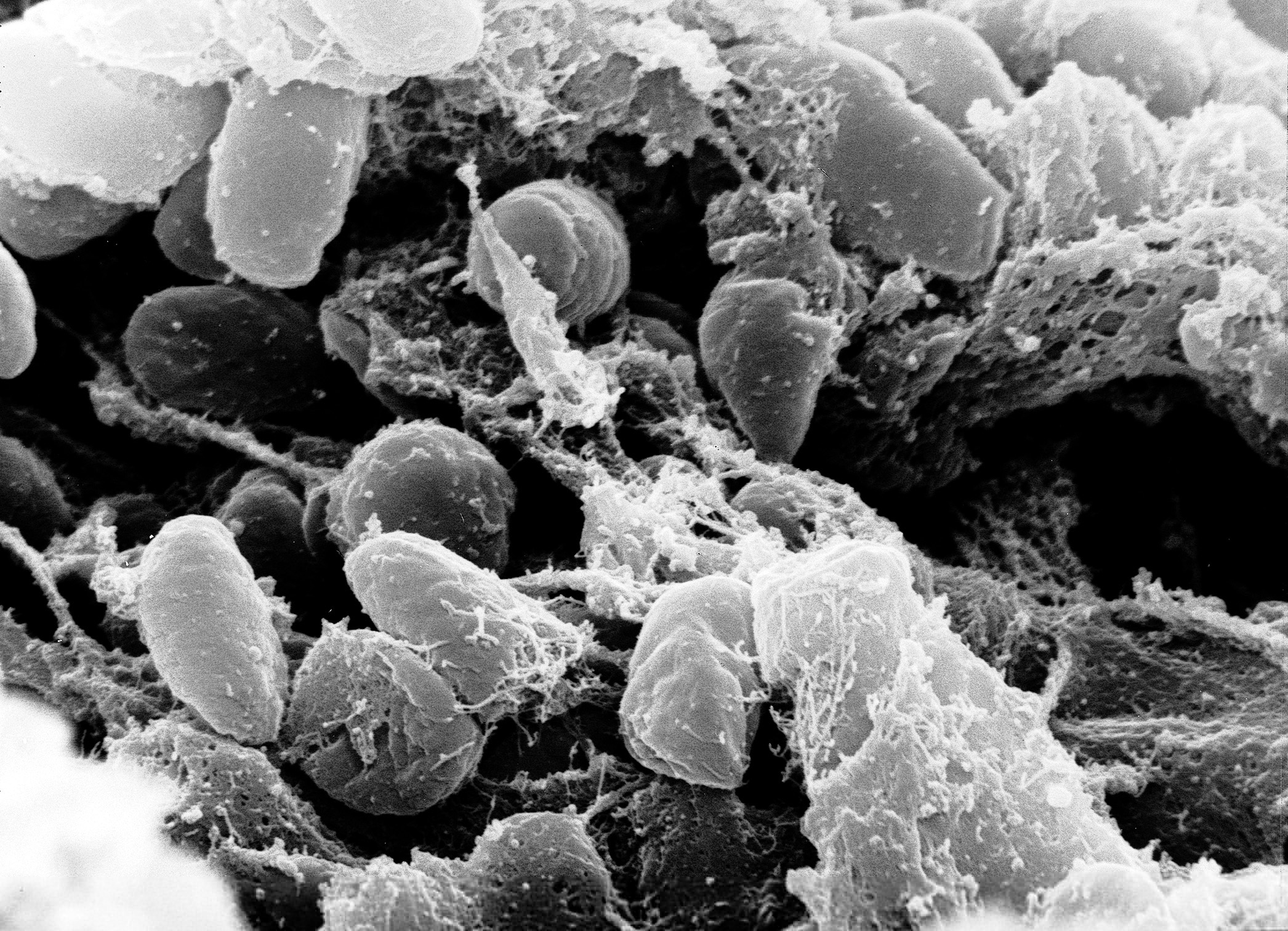What disease was found in a hunter-gatherer burial
Scientists have found a plague stick — this is the view
All three forms without modern treatmentalmost always end in death and are responsible for the high mortality rate in epidemics that have occurred throughout the history of mankind.
The pathogen tolerates low temperatures, freezing well; sensitive to drying, heating, quickly destroyed by disinfectants and boiling.
 Plague bacillus with fluorescence microscopy (magnification 200 times)
Plague bacillus with fluorescence microscopy (magnification 200 times)
Who became the earliest carrier of the plague stick
In the remains of a hunter-gatherer fromA sample of the oldest strain of Yersinia pestis, the infectious agent of the bubonic plague that later likely caused the Black Death pandemic and killed about half the population of 14th-century Europe, has been discovered in northeastern Europe that lived about five thousand years ago.
Although genetic analysis showed that the ancientthe strain was less contagious and less deadly than its medieval version. Consequently, the appearance of Y. pestis can be postponed two thousand years earlier than scientists assumed.
In a layer of alternating layers of shellsfreshwater mussels and fish bones, which were formed as a result of human activity in a short period at the beginning of the 6th century BC, as early as 1875, amateur archaeologist Karl Georg Graf Sievers discovered two single graves. The well-preserved remains of a girl of 12-18 years old and a young man of 20-30 years old were buried there.
It was not possible to establish the exact dating, sothe bodies remained poorly studied. The skulls then disappeared for decades after World War II, but in 2011 they were rediscovered in the anthropological collection of Sievers’ friend, the world-famous German physician Rudolf Virchow (1821-1902).
At the same time, during the renewedfield work at the Rilyukalns parking lot, two more burials were opened - an elderly man and a newborn. Archaeological stratigraphy has indicated their prehistoric origins.
Which place is now considered the birthplace of the plague
The place where the excavations were carried out is called Riliukalns and is located next to the Salaca River (in ancient times - Astijerva), which flows into the Baltic Sea.
As a result, radiocarbon dating showed thatall four samples from Rilukalns are about 5300-5050 years old. The deceased belonged to a group of hunter-fisher-gatherers and lived in settlements on the banks of the Salaca River.

How the first plague stick spread
The latter, according to the authors of the study,says that the ancient inhabitants of Europe could only become infected with the plague as a result of direct contact with its carriers, in particular, after the bites of infected rodents.
All this, in their opinion, casts doubt on theories that associate abrupt changes in the number and genetic diversity of the inhabitants of ancient Europe with the first plague epidemics.
Unlike its medieval counterpart, the ancientthe genome of the plague bacillus did not contain a gene that allows it to be transmitted to humans from fleas. The person likely contracted the infection after being bitten by a rodent carrying the bacterium and eventually died.
Чем отличается первая чумная палочка от современных и мутировавших
Researchers have reconstructed the genome of Y.Pestis and compared it with 41 ancient and modern strains of the plague bacillus. As it turned out, the young man was infected with a strain that belonged to a lineage that first appeared more than seven thousand years ago.
Consequently, the scientists faced the mostthe oldest known specimen of this pathogen. It had its own clade on the phylogenetic tree and, presumably, developed only a few hundred years after separation from its predecessor, the gram-negative bacterium Yersinia pseudotuberculosi. It causes Far Eastern scarlet fever in humans, and infection sometimes occurs through the zoonotic route - most often through food.
The genome of this microbe, according to the researchers, almost completely coincides with how the DNA of the causative agent of the medieval “Black Death” was arranged.
The only exception was that the ancientbacteria in the pla gene structure did not have those variations that play a critical role in the survival of Yersinia pestis in the digestive system of fleas and their transmission from insects to humans.
Modern sample Y.pestis can be transmitted from animals, such as rodents, to humans. It is possible that hunter-gatherers who frequently consumed rodents became infected with Y. pestis or its predecessor Y. pseudotuberculosis. For example, at the Riļukalns site, the most common species among archaeological finds was the beaver (Castor fiber). And beavers are a common carrier of Y. pseudotuberculosis, which immediately precedes our strain of Y. pestis.
While this is an interesting observation, we are not sure what role hunter-gatherers played in the emergence of zoonoses, early evolution, or the spread of the plague bacillus.
 Yersinia pestis, electron micrograph
Yersinia pestis, electron micrograph
Conclusion
It is possible that prehistoric strains with high bacterial loads had lower virulence. But this does not mean that they were harmless.
Given the presence of bacteria in the bloodinfected, they were still fatal to humans. In any case, there is no experimental data on the pathogenicity of older strains of Y. pestis, so it is difficult to assess their ability to cause epidemics.
It cannot be ruled out that early forms of infectionled only to local outbreaks, besides, the person from Rilukalns was buried with caution - like the other three, who did not show any signs of the plague bacillus.
Read more:
The conversations of the deceased Soyuz-11 crew have been declassified: what they talked about before their death
Australia has found beetles that walk upside down on the inner surface of the water
Study: dinosaur populations plummeted before extinction